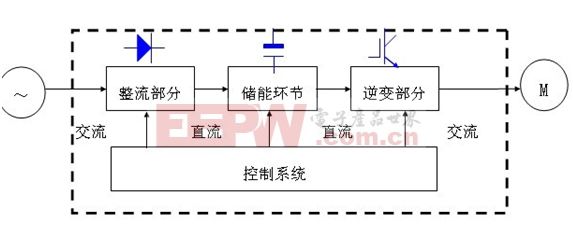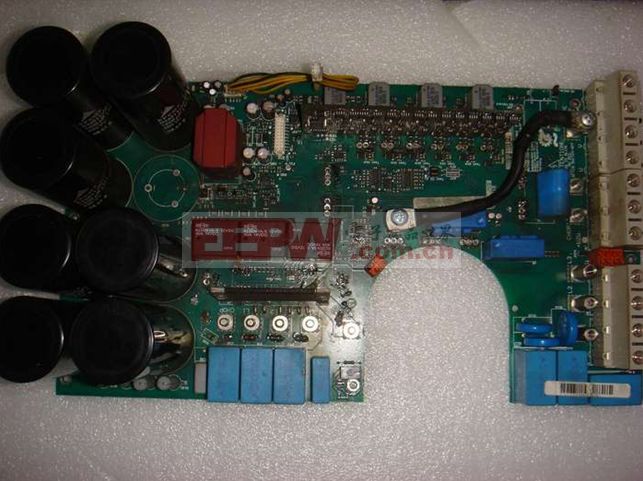Introduction: This article mainly introduces the speed control principle of the inverter . Those who don't understand the pots are coming to learn it. Enrich your knowledge base~~~~
1. Principle of frequency converter speed regulation--introduction
The frequency converter is a power control device that controls the AC motor by changing the working frequency of the motor by applying the frequency conversion technology and the microelectronic technology. The frequency converter is mainly composed of rectification, filtering, inverter, braking unit, driving unit and detection unit micro processing unit. The frequency converter is generally a power control device that converts the power frequency power source into another frequency by using the on/off function of the power semiconductor device. The main circuit of the inverter can be roughly divided into two types: the voltage type is a frequency converter that converts the direct current of the voltage source into an alternating current, the filtering of the direct current circuit is a capacitor, and the current type is a frequency converter that converts the direct current of the current source into an alternating current. Its DC loop filtering is an inductor. With the continuous improvement of industrial automation, inverters have also been widely used.

2. Frequency converter speed control principle - structure
Inverter power supply for AC motor frequency conversion speed regulation is generally a frequency converter. According to the main circuit circuit structure, the inverter has two configurations: AC-AC inverter and AC-DC-AC inverter. Below we introduce the composition of the AC-DC-AC inverter.
The AC-DC-AC inverter first converts the commercial frequency AC power into DC power through the rectifier, and then converts the DC power into a controllable AC power such as frequency and voltage. It is also called an indirect inverter. The basic structure of the AC-DC-AC inverter is shown in the following figure. It consists of the main circuit (including rectifier, intermediate DC link, inverter) and control circuit. The functions of each part are as follows:
Rectifier----The inverter on the grid side is a rectifier. Its function is to rectify three-phase (or single-phase) AC to DC.
Inverter----The inverter on the load side is the inverter. The most common form of construction is a three-phase bridge inverter circuit that utilizes six semiconductor main switching devices.
Intermediate DC link----Because the load of the inverter is an inductive load, there will always be a reactive power exchange between the intermediate DC link and the motor.
Control circuit----The control circuit is composed of an arithmetic circuit, a detection circuit, an input and output circuit of a control signal, and a drive circuit. Its main task is to complete the switching control of the inverter, the voltage control of the rectifier and complete various protection functions.

3. Frequency converter speed principle
The frequency converter is a power control device that converts the power frequency power source into another frequency by using the on/off function of the power semiconductor device. The inverter we use now mainly adopts the AC-DC-AC method. The power frequency AC power supply is first converted into a DC power supply through a rectifier, and then the DC power supply is converted into an AC power source whose frequency and voltage can be controlled to supply the motor. Theoretically, we know that the motor speed N has the following relationship with the power supply frequency f:

In the formula, n2 is the synchronous rotational speed, Δn1 is the rotational speed of the slip loss, p is the number of magnetic pole pairs, s is the slip ratio, and f is the frequency of the power source. It can be seen that changing the power frequency can change the synchronous speed and the motor speed. A decrease in frequency causes an increase in magnetic flux, causing saturation of the magnetic circuit, an increase in excitation current, a decrease in power factor, and overheating of the core and the coil. Obviously this is not allowed, so you have to step down while down-clocking.

Expand reading:
1. Inverter knowledge encyclopedia: basic articles
2. Basic steps of inverter debugging
3. The working principle of the inverter
Inverter
RandM Tornado 9000 is a Disposable Vape device with cool design and it is rechargable. It contains 18ml 0/2/3/5% nicotine salt e-juice and vape up to 9000 puffs. There are 12 flavors for you to choose. The rechargeable port at the buttom of the device gurantting you finish the last drop of the ejuice in the tank all the time.
RandM Tornado 9000 Disposable Device Features:
☑0/2/3/5% Nicotine Salt.
☑18ML of E-liquid.
☑Mesh Coil
☑Battery Rechargable
☑Integrated 850mAh Battery.
☑12 Flavors Available.
☑10pcs in a display box.
☑200pcs in a carton.
Flavors Available:
1, Blueberry Raspberry
2, Mr Blue
3, Strawberry Watermelon
4, Orange Soda
5, Watermelon bubble gum
6, Rainbow candy
7, Pink Lemonade
8, Peachy Mango Pineapple
9, Strawberry Banana
10, Lush Ice
11, Black Dragpn Ice
12, Aloe Grape
disposable vape device,VAPE DEVICE ,VAPE KIT,VAPE POD,RANDM VAPE
Shenzhen Essenvape Technology Co., Ltd. , https://www.essenvape.com
